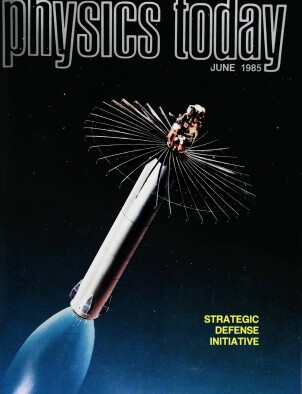Strategic Defense Initiative: The Politics and Science of Weapons in Space
DOI: 10.1063/1.880976
On 23 March 1983, President Reagan announced on national television that he was “launching an effort which holds the promise of changing the course of human history”—a scientific research program to determine whether a defense against ballistic missiles could be feasible. The President characterized the program, now known as the Strategic Defense Initiative, as a “formidable technical task” that might not be attainable before the end of this century. “Would it not be better to save lives than to avenge them?” he asked that night. “What if free people could live secure in the knowledge that their security did not rest upon the threat of instant retaliation to deter a Soviet attack, that we could intercept and destroy strategic ballistic missiles before they reach our soil or that of our allies?” At the end of his talk, he called on the scientific community that invented nuclear weapons “to turn their great talents now to the cause of mankind and world peace, to give us the means” to devise ways of “rendering nuclear weapons impotent and obsolete.”
This article is only available in PDF format
References
1. D. O. Graham, The Non‐Nuclear Defense of Cities: The High‐Frontier Space‐Based Defense Against ICBM Attack, Abt Books, Cambridge, Mass. (1983).
2. Soviet Military Power 1985, Department of Defense (1985).
3. F. S. Hoffman, Study Director, Ballistic Missile Defenses and US National Security, Summary report for Future Security Strategy Study, Department of Defense (Oct. 1983).
4. For nonclassified accounts of the study see J. C. Fletcher, testimony before Subcommittee on R&D, Armed Services Committee, House of Representatives, 1 March 1984,
and J. C. Fletcher, “The Technologies for Ballistic Missile Defense,” Issues in Science and Technology 1, No. 1 (Fall 1984), p. 15.
More about the Authors
Gerold Yonas. Sandia National Labs since.




